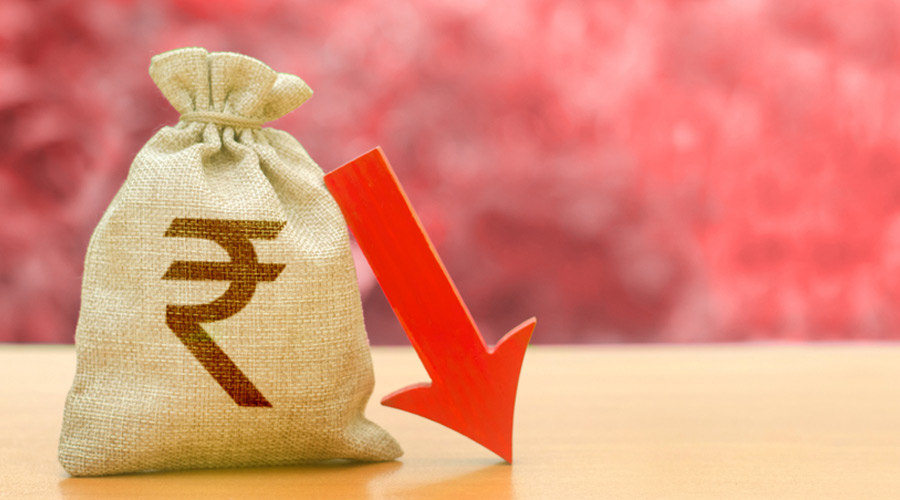The rupee has crashed past 79 to the dollar to hit a fresh all-time low and analysts say the currency has further to fall as it reels from a continued selloff in equity markets and high crude oil prices.
The currency slid on Wednesday by over 19 paise during the day to close at a record low of 79.04 against the greenback.
Piling pressure on the rupee has been the soaring value of the country’s imports – India’s crude oil import bill more than doubled in May to $19.19 billion
Also hitting the currency has been aggressive interest-rate tightening around the world, led by the US Federal Reserve, aimed at crushing record inflation levels. A third factor driving down the rupee has been the geopolitical uncertainty caused by Russia’s invasion of Ukraine that’s triggered an investor flight to safety in the form of US assets.
Right now, “markets are far more comfortable rushing into the apparent safety of the dollar at the first sign of trouble," said Jeffrey Halley, Asia Pacific analyst at OANDA.
Analysts believe that the rupee could be headed for 80/81 levels with the US Federal Reserve expected to hike rates by three-quarters of a percentage point at its meeting in July.
The rupee “could touch the 80 level in the near term,” Rajani Sinha, chief economist at CARE Ratings. Other analysts see the rupee heading toward 81 to the dollar.
The US dollar is at a 20-year high against a basket of currencies thanks to its storming rate hiking pace.
“The rupee is headed towards the 80 mark in the next couple of quarters if inflation-related concerns continue to remain high.” said Gaurang Somaiya, forex analyst at Motilal Oswal Financial Services.
The US rate hikes in the “current risk averse environment” are seen bolstering the dollar and creating a “depreciating bias” for the rupee, noted Aditi Nayar, chief economist at ratings agency ICRA.
The rupee has fallen 5.3 per cent against the dollar since the start of the calendar year.
Analysts say what’s been preventing the rupee from falling further is heavy intervention by the Reserve Bank of India to support the currency.
This has meant a significant drawdown of its foreign exchange reserves but meant the rupee has held its own better against the dollar than some other emerging market currencies like the Philippine peso and Thai baht which have been the worst performing in Asia.
“It is not just the Indian rupee, other major currencies like the euro and yen and most other emerging market currencies have weakened against the dollar,” said Rajani Sinha, Chief Economist at CARE Ratings.
But the central bank needs to hang on to its forex reserves to meet import requirements. Analysts say that the only thing the bank can do is smooth the rupee’s decline, not defend any specific level for the currency against the dollar. Analysts say right now the rupee has enough import cover for 11 months.
“The Reserve Bank has been supporting rupee by strong interventions to counter the impact of outflows. This has led to a significant fall in forex reserves,” said Emkay Global.
“But given a robust accumulation of the forex war chest over the years, the rupee has still been holding up better than emerging market peers, albeit with consistent interventions by the Reserve Bank,” Emkay Global said.
Sinha said she believes the Reserve Bank will continue to intervene in the forex market to “cushion the fall of the rupee. However, with all other emerging market currencies weakening against the dollar, the bank will let the rupee also weaken gradually,” she added.
Reserve Bank Deputy Governor Michael Patra laid out the bank’s strategy going forward.
“We have no (rupee-dollar) level in our mind, but we will not allow jerky movements that is for certain and let it be widely known that we are in the market defending the rupee against volatility," Patra said.
Further Indian central bank rate increases – the Reserve Bank is expected to hike rates again in August – will ensure that the gap between US and India interest rates doesn’t get too big and this should prevent a significant sharp weakening of the rupee, analysts say.











